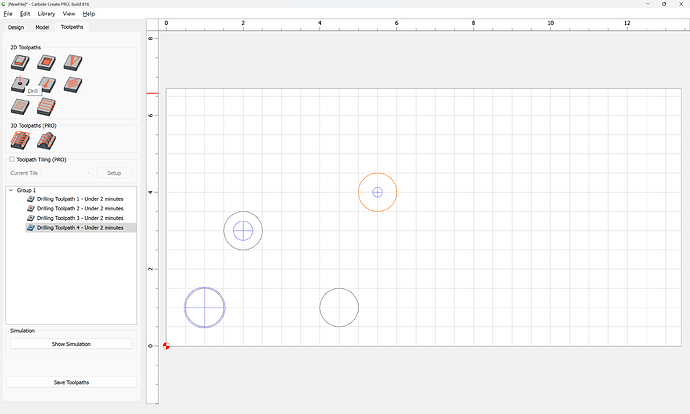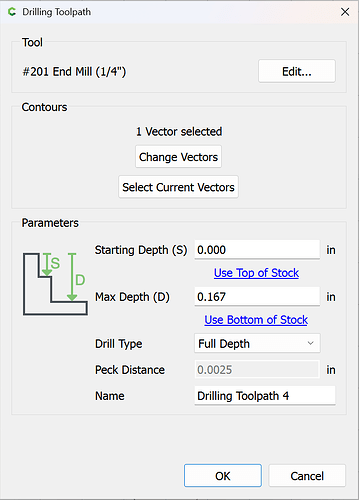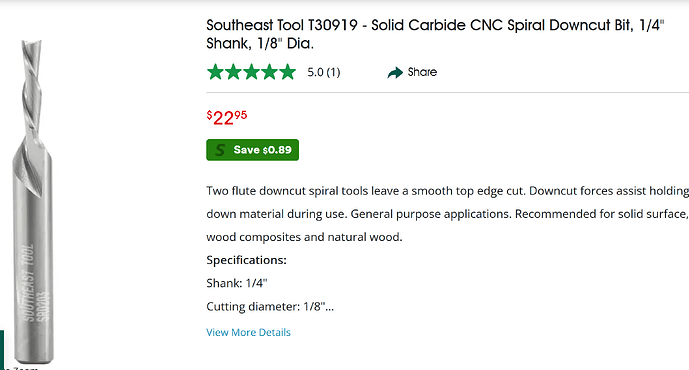Bielee1
June 28, 2025, 1:58am
1
I am trying to drill holes for a board game. I set the size. Want in carbide connect but with I run the tool paths the size of the holes do not change as put in carbide connect. What am I missing?
WillAdams
June 28, 2025, 2:04am
2
Are you using a Drill toolpath?
Using what tool? At what feeds and speeds? In what material?
How are you measuring the bore?
Is using a smaller tool and cutting as a pocket, leaving a roughing clearance and taking a finishing pass an option?
Photo showing how the stock was secured and how the cut turned out?
Upload your file?
Bielee1
June 28, 2025, 3:09am
3
I was but after doing more reading I switched to a pocket cut. That works better but I don’t get round circles. The are slightly oblong
WillAdams
June 28, 2025, 3:23am
4
In that case, leave a roughing clearance larger than the defect you are seeing and then cut to the finished size using a finishing pass.
See:
While cutting up vacuum extension wands for this is expedient, it’s a bit problematic given that Shop Vac recently filed for bankruptcy, was bought at the last minute, and production hasn’t caught up.
I need a receptacle for the Sweepy 2.0 dust fitting — one option would be to purchase one from Woodcraft, but Carbide 3D sells blocks of HDPE:
which looks to be just barely big enough for things to fit.
Measuring the hose fitting I get a diameter of ~63.5mm — offsetting that twice we arrive at…
and/or
One technique which is often suggested to avoid slotting is to add geometry around a part which one wishes to cut out and cut as a pocket down to tab depth — here’s one technique for that.
In this case, the project is a bevel gauge which will be cut out of 0.0625" (~1.5mm) thick aluminum:
[bevelgauge]
Due to the narrowness of the angles, an 0.03125" endmill has to be used, so after importing and scaling the file (we will be cutting out one which is 3") we select the perimeter and offset it tw…
and consider leaving a roughing clearance and taking a finishing pass.
One which has a cutting flute length equal to or greater than the thickness of the stock — pretty much any tool should work.
Big thing is the toolpaths — if cutting out, rather than just cutting a slot:
[image]
Offset to the outside by endmill diameter plus 10% or so:
[image]
[image]
[image]
Then cut as a pocket:
[image]
down to tab height or the penultimate pass:
[image]
then move the contour down to below the pocket and start cutting at the bottom of the pocket:
[image]
and…
gdon_2003
June 28, 2025, 7:43pm
5
I drill some holes with a pocket. You have to use a bit that is smaller than hole. So for a 1/4" hole I use a 1/8" bit. The #102 is rather short so I use a Grizzly 1/8" longer bit that has a 1/4" shank.
As far as your holes being oblong you may need to run a calibration with circles and squares to make sure your machine is mechanically sound. The oblong holes may just be the bit deflecting. But you should run a calibration to make sure your squares are square and your round circles are actually round. If the calibration is good then it will be about F&S.
1 Like
system
July 28, 2025, 7:44pm
6
This topic was automatically closed 30 days after the last reply. New replies are no longer allowed.


